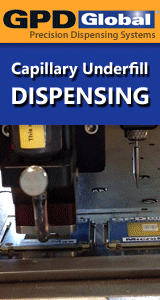Printed Circuit Board Assembly & PCB Design Forum
SMT electronics assembly manufacturing forum.
- SMTnet
- »
- Electronics Forum
- »
- Lead Free Wave Soldering
Lead Free Wave Soldering
![]() Hi,
Does anyone have experience Or any information regard...
- Jul 22, 2004
by
Roni Haviv
Hi,
Does anyone have experience Or any information regard...
- Jul 22, 2004
by
Roni Haviv
![]()
![]()
![]() Do a search on it there are some old listings of it im sure....
- Jul 22, 2004
by
Mark M.
Do a search on it there are some old listings of it im sure....
- Jul 22, 2004
by
Mark M.
![]()
![]()
![]() I have been LF wave soldering for well over a year now.
...
- Jul 22, 2004
by
I have been LF wave soldering for well over a year now.
...
- Jul 22, 2004
by
![]()
![]() Notes from an AIM No-Lead Presentation ...
Wave Soldering...
- Jul 22, 2004
by
davef
Notes from an AIM No-Lead Presentation ...
Wave Soldering...
- Jul 22, 2004
by
davef
![]()
![]()
![]() Many trials conducted so far from single sided to Mixed tech...
- Jul 23, 2004
by
Many trials conducted so far from single sided to Mixed tech...
- Jul 23, 2004
by
![]()
![]() I'd be interested to hear what the PWB vendors have to say a...
- Jul 23, 2004
by
Loz
I'd be interested to hear what the PWB vendors have to say a...
- Jul 23, 2004
by
Loz
![]()
![]()
![]() We manufacture conversion kits for lead free wave solder mac...
- Jul 26, 2004
by
We manufacture conversion kits for lead free wave solder mac...
- Jul 26, 2004
by
![]()
![]() May I ask why silver in your wave solder bath? This is an i...
- Jul 26, 2004
by
May I ask why silver in your wave solder bath? This is an i...
- Jul 26, 2004
by
- SMTnet
- »
- Electronics Forum
- »
- Lead Free Wave Soldering







